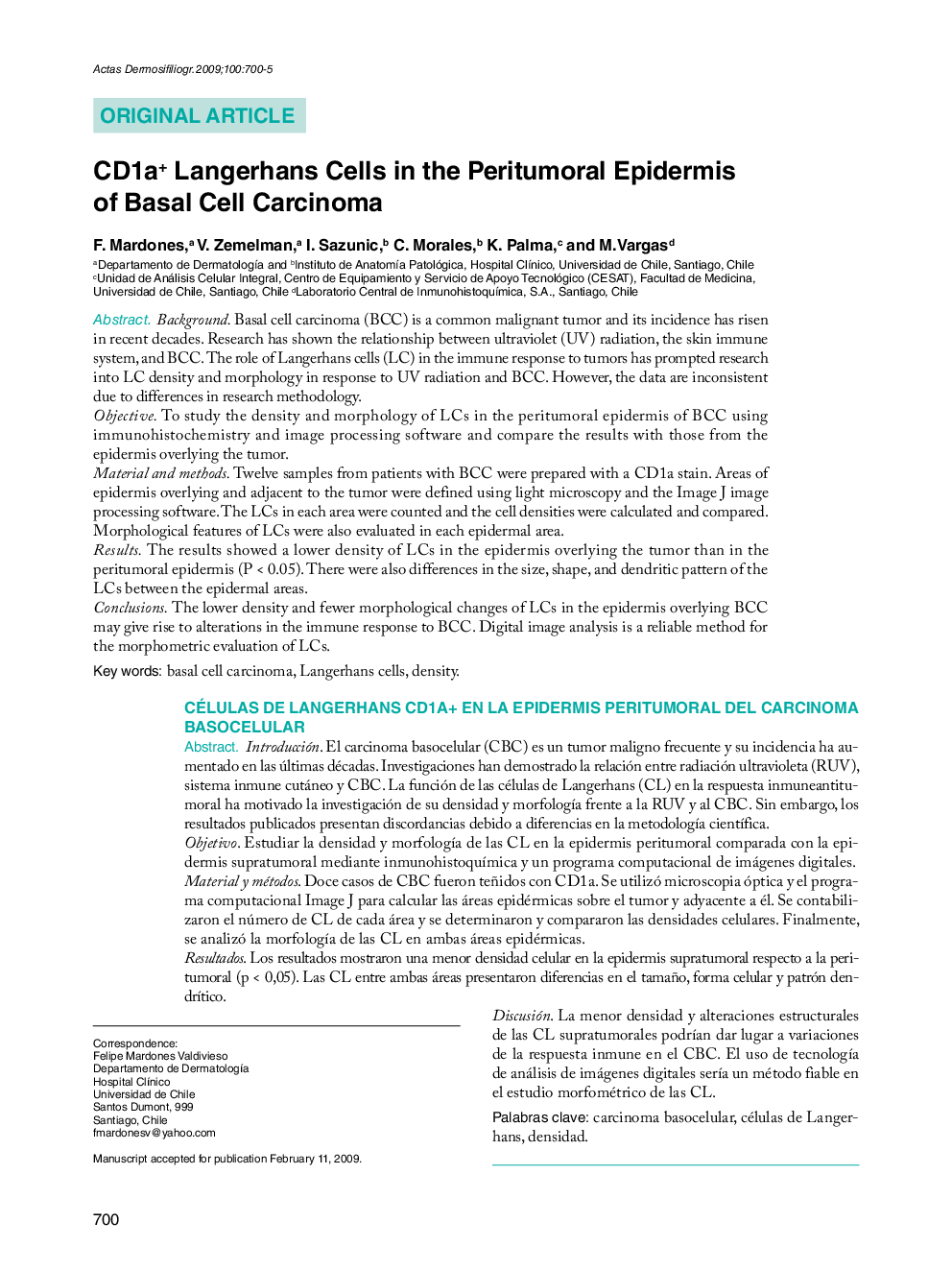| Article ID | Journal | Published Year | Pages | File Type |
|---|---|---|---|---|
| 3184014 | Actas Dermo-Sifiliográficas (English Edition) | 2009 | 6 Pages |
BackgroundBasal cell carcinoma (BCC) is a common malignant tumor and its incidence has risen in recent decades. Research has shown the relationship between ultraviolet (UV) radiation, the skin immune system, and BCC. The role of Langerhans cells (LC) in the immune response to tumors has prompted research into LC density and morphology in response to UV radiation and BCC. However, the data are inconsistent due to differences in research methodology.ObjectiveTo study the density and morphology of LCs in the peritumoral epidermis of BCC using immunohistochemistry and image processing software and compare the results with those from the epidermis overlying the tumor.Material and methodsTwelve samples from patients with BCC were prepared with a CD1a stain. Areas of epidermis overlying and adjacent to the tumor were defined using light microscopy and the Image J image processing software. The LCs in each area were counted and the cell densities were calculated and compared. Morphological features of LCs were also evaluated in each epidermal area.ResultsThe results showed a lower density of LCs in the epidermis overlying the tumor than in the peritumoral epidermis (P < 0.05). There were also differences in the size, shape, and dendritic pattern of the LCs between the epidermal areas.ConclusionsThe lower density and fewer morphological changes of LCs in the epidermis overlying BCC may give rise to alterations in the immune response to BCC. Digital image analysis is a reliable method for the morphometric evaluation of LCs.
ResumenIntroducciónEl carcinoma basocelular (CBC) es un tumor maligno frecuente y su incidencia ha aumentado en las últimas décadas. Investigaciones han demostrado la relación entre radiación ultravioleta (RUV), sistema inmune cutáneo y CBC. La función de las células de Langerhans (CL) en la respuesta inmuneantitumoral ha motivado la investigación de su densidad y morfología frente a la RUV y al CBC. Sin embargo, los resultados publicados presentan discordancias debido a diferencias en la metodología científica.ObjetivoEstudiar la densidad y morfología de las CL en la epidermis peritumoral comparada con la epidermis supratumoral mediante inmunohistoquímica y un programa computacional de imágenes digitales.Material y métodosDoce casos de CBC fueron teñidos con CD1a. Se utilizó microscopia óptica y el programa computacional Image J para calcular las áreas epidérmicas sobre el tumor y adyacente a él. Se contabilizaron el número de CL de cada área y se determinaron y compararon las densidades celulares. Finalmente, se analizó la morfología de las CL en ambas áreas epidérmicas.ResultadosLos resultados mostraron una menor densidad celular en la epidermis supratumoral respecto a la peritumoral (p < 0,05). Las CL entre ambas áreas presentaron diferencias en el tamaño, forma celular y patrón dendrítico.DiscusiónLa menor densidad y alteraciones estructurales de las CL supratumorales podrían dar lugar a variaciones de la respuesta inmune en el CBC. El uso de tecnología de análisis de imágenes digitales sería un método fiable en el estudio morfométrico de las CL.
